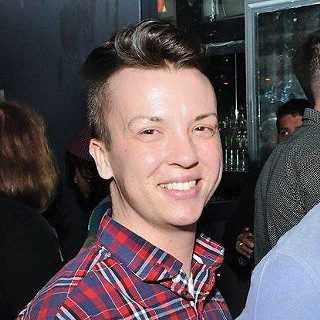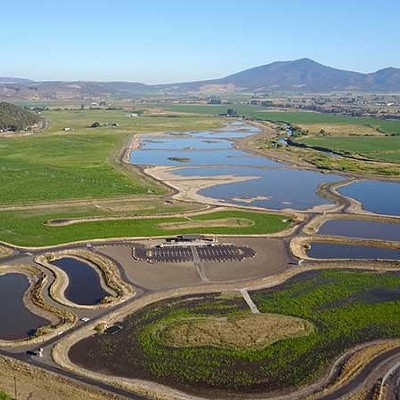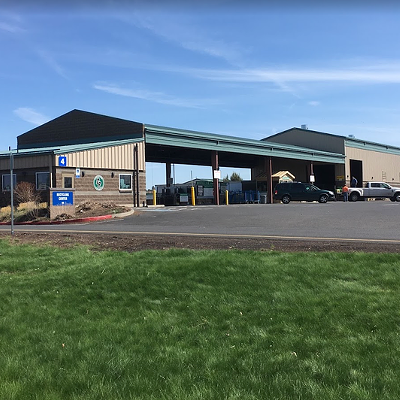
After a lengthy debate on whether to use ultraviolet lights or membranes to filter Bend's surface water, the City Council voted 4-3 in favor of moving forward with the stalled membrane option, effectively putting to rest a 5-year discussion.
But the decision making approach left many in the audience, as well as a few councilors, scratching their heads. Instead of moving to accept or reject the unnumbered resolution on the agenda, to "proceed with membrane filtration treatment for the city's Bridgecreek pipeline replacement project," Councilor Victor Chudowsky introduced a motion to effectively revert back to the resolution approved by council in 2010 to move forward with membrane filtration.
While opinion in the preceding discussions had been split evenly between the UV camp (Mayor Jim Clinton and Councilors Doug Knight and Sally Russell) and the membrane camp (Councilors Jodie Barram, Scott Ramsay and Chudowsky), that tie was broken by Councilor Mark Capell, who had remained silent during the debate on account of a "potential conflict" regarding his brother's employment with the company contracted to construct the filtration system.
Here's the (paraphrased) gist of what each councilor had to say about the filtration options:
Mayor Clinton: Other major cities (such as New York, Seattle, Portland, and San Francisco) have all chosen UV filtration on account of the significant price difference. And with their much larger populations, they have more reason to worry about dangerous waterborne bugs like cryptosporidium. While we can't predict future operational costs with much certainty due to the number of variables, the capital costs for UV are substantially lower than membrane.
Councilor Barram: Everyone is doing what they think is best for the city. I supported taking a second look at this issue, and it wasn't an easy decision. While I recognize that numbers can be manipulated to support certain perspectives, I believe the numbers that say membrane is safe and cost-effective. UV could be more costly in the long run.
Councilor Ramsay: We already decided this years ago. We asked multiple experts and they all agreed membrane was the best option. Let's move on to issues we haven't already decided twice.
Councilor Chudowsky: A major fire (with the potential to shut down operation of a UV plant for an undetermined amount of time) is a real possibility. We also need to consider each system's potential to handle growth. The price of membrane is high, but it's a clearer figure than murky UV cost estimates.
Councilor Knight: I support UV because it's far less expensive and the risks are overstated. We've got sufficient well water to get us through should a fire shut down the surface water filtration system. And the risk of catastrophic fire is incredibly low. Also, with millions already spent researching membrane filtration, it's natural for city staff to present that option in the best light. But that fact makes it difficult for the new council to reach an unbiased conclusion.
Councilor Russell: We need to consider other upcoming financial obligations and choose the option that is the most responsible investment. Is the greater cost of membrane filtration justified by the extent to which it reduces risks or are there other, cheaper ways to address those concerns?
One major point of contention was the price tag. Multiple councilors expressed concern that the numbers presented during the work session by Peter Kreft (a consultant hired by the city to provide information for the Water Treatment Advisory Committee) were different from numbers previously presented. While the estimated cost for membrane filtration remained constant, the figures for the UV approach varied, depending on whether they included additional wells or disinfection costs (which add approximately $40 million to the UV price tag and which some argue are equally necessary for a membrane system).
City of Bend CFO Sonia Andrews estimates the cost of building a membrane filtration system will lead to a 10 percent increase in water utility rates.
In other City Council news, nine members of the cycling organization Bend Bikes stepped up to the podium to thank the city for improving bike lanes and other infrastructure as part of the Riverside/Franklin project, and urged the council to continue to expand these efforts.
Scott Ferguson, a former fair-weather cyclist who challenged himself last summer to spend a year getting around by bike, expressed his gratitude for the city's efforts.
"I've come to really appreciate the kinds of things Bend has been doing in this community," he said. "I hope Council will continue to support these kinds of projects."
Matt Denney, from the Summit West Neighborhood Association, also shared in the group's annual report to Council that members would like to see more bike lanes in their neighborhood.

























